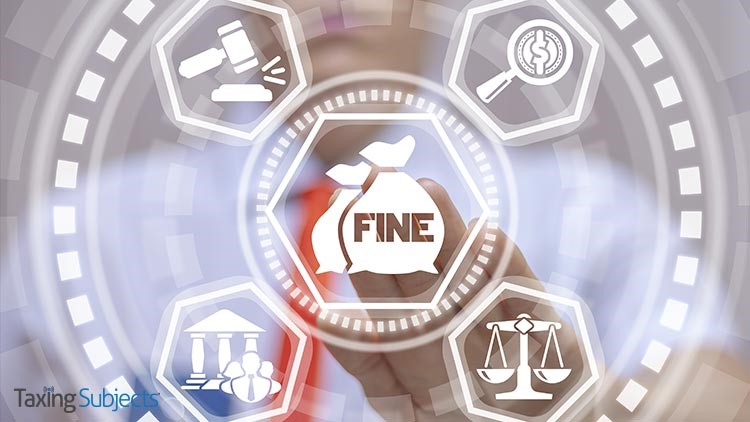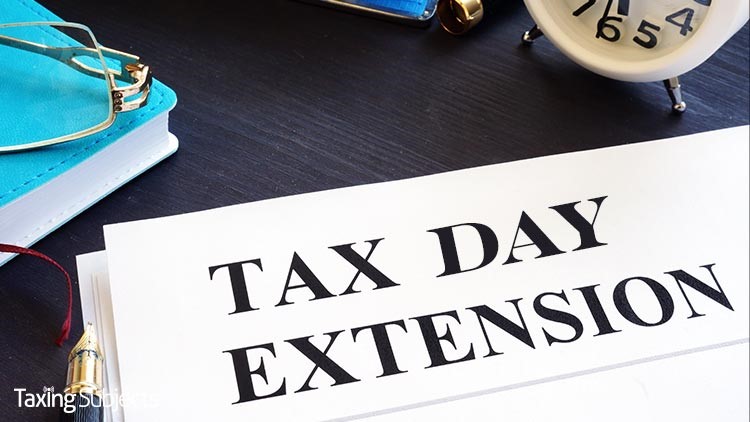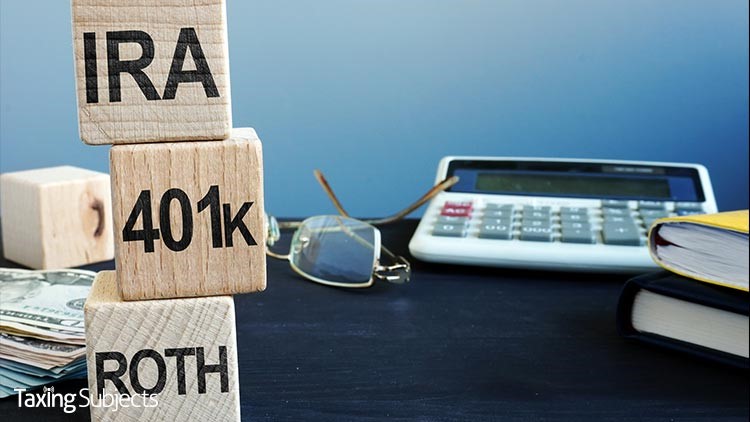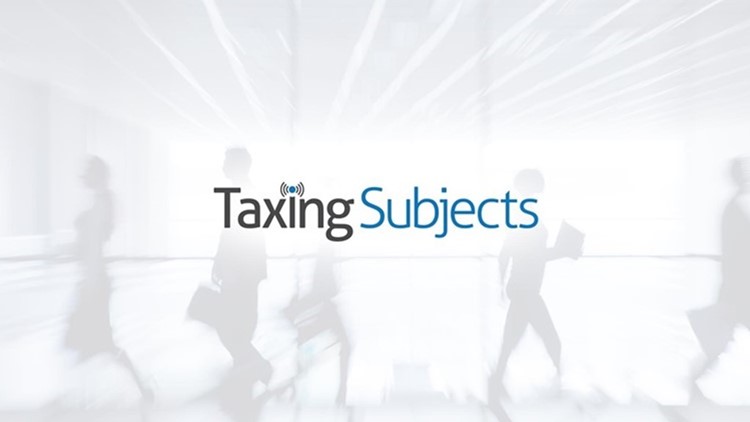by | Mar 24, 2021 | Tax Tips and News
The Internal Revenue Service says it’s pulling out all the stops to come to agreement with taxpayers who owe back taxes. Through its Office of Chief Counsel, the agency announced the significant expansion of its Settlement Days program and proclaimed March 2021 is now “National Settlement Month.”
All hands on deck
These annual Settlement Days are coordinated efforts that aim to resolve cases in U.S. Tax Court. The IRS seeks to give taxpayers who don’t have counsel of their own the chance to get “free tax advice from Low Income Taxpayer Clinics (LITCs), American Bar Association (ABA) volunteer attorneys, and other pro bono organizations.”
To help meet this goal, the IRS has been working with Chief Counsels in every state and the District of Columbia to make sure unrepresented taxpayers across the country have a chance to participate in Settlement Days. Because of the pandemic, the program will once again feature “Virtual Settlement Days” rather than face-to-face meetings.
The IRS notes that taxpayers “can also discuss their Tax Court cases and related tax issues with members of the Office of Chief Counsel, the IRS Independent Office of Appeals, and IRS Collection representatives.” These wider communication channels can help both sides to reach a settlement by giving taxpayers a better idea of what’s needed to support their case.
If a settlement is reached, IRS Collection representatives can discuss potential payment alternatives.
The Virtual Settlement Days structure can also help those taxpayers who decide to go to court, providing them with a better idea of what information they need to be successful.
Settlement Days will address other issues, too
The Taxpayer Advocate Service is also pitching in to expand the types of services offered on Settlement Days.
“Local Taxpayer Advocates and their staff can work with and inform taxpayers about how TAS may be able to assist with other unresolved tax matters, or to provide further assistance after the Tax Court matter is concluded,” the IRS explains. “If a taxpayer experiences difficulties concerning collection, TAS can also assist with collection alternatives.”
How do taxpayers participate in Settlement Days?
There are a few different ways that taxpayers can participate in a VSD event.
“One way is to be notified and invited to attend by the IRS as part of its work with LITCs and pro bono attorneys,” the IRS says. “The IRS proactively identifies and reaches out to taxpayers with Tax Court cases which appear most suitable for this settlement day approach. The IRS also generally encourages taxpayers with active Tax Court cases to contact the assigned Chief Counsel attorney or paralegal about participating in the March VSD events.”
Commissioner Rettig says a taxpayer has nothing to lose by taking part in the Virtual Settlement Day process.
“I strongly encourage all taxpayers who have the ability to participate in a settlement day event to do so because they will understand their own case better while not giving up their day in court if they so choose,” Rettig said.
This year’s program will be offered at several new locations, like the following:
- Albuquerque
- Billings
- Buffalo
- Cheyenne
- Cleveland
- Denver
- Des Moines
- Indianapolis
- Little Rock
- Milwaukee
- Nashville
- Peoria
- Omaha
- Reno
- Sacramento
- San Diego
- San Jose
Last year’s foray into virtual meetings not only provided the blueprint for this year’s Settlement Days event, but it has been used to help provide resolution services to taxpayers all year long.
“Chief Counsel and LITCs have successfully used VSD events to help more than 259 taxpayers resolve Tax Court cases without having to go to trial,” the IRS says. “This saves taxpayers and the government time and money.”
The IRS stresses, however, that this help isn’t exclusive to Settlement Days: Chief Counsel attorneys and paralegals who are assigned to cases are always available to settle cases outside of the VSD program.
Source: IRS Office of Chief Counsel unveils National Virtual Settlement Days effort this year to reach more taxpayers in more parts of the nation
– Story provided by TaxingSubjects.com
by | Mar 18, 2021 | Tax Tips and News
Much like last year, the 2021 filing season has been characterized by challenges. The season started later than usual, tax professionals and taxpayers continue to manage pandemic safety precautions, and guidance is pending for the retroactive tax law changes included in the American Rescue Plan Act of 2021 that President Biden signed into law last week. So, it comes as no surprise that the Internal Revenue Service today announced the federal filing and payment deadline is delayed by a month.
Americans now have until May 17, 2021 to file their tax year 2020 federal income tax return and pay any tax owed. The change to the payment deadline is notable, since “individual taxpayers will automatically avoid interest and penalties on the taxes paid by May 17.” While taxpayers can still request an October 15 filing extension, the IRS notes that it won’t affect the new payment deadline.
Estimated tax payment deadlines, winter storm disaster relief deadlines, and state filing deadlines are not affected
The new deadline may grant additional time to file and pay federal income tax for tax year 2020, but the IRS says it does not affect the following:
- April 15, 2021 quarterly estimated tax payment deadline
- June 15, 2021 federal filing and payment deadline granted to victims of winter storms in Louisiana, Oklahoma, and Texas
- State and D.C. income tax deadlines
Since “most taxpayers automatically have their taxes withheld from their paychecks and submitted to the IRS by their employer,” the quarterly estimated tax payment deadline predominantly affects these types of income:
- Self-employment income
- Interest
- Dividends
- Alimony
- Rental income
Last year when the federal filing deadline was delayed, many—but not all—states that collect income tax changed their filing deadlines to match the federal date. So, “the IRS urges taxpayers to check with their state tax agencies for those details.”
Be sure to regularly visit the News section of the IRS website for further guidance and updates.
Source: IR-2021-59
– Story provided by TaxingSubjects.com
by | Mar 18, 2021 | Tax Tips and News
There are a lot of things vying for our attention these days: the coronavirus, vaccine opportunities, new Economic Impact Payments, the new tax deadline—all worthy topics. But when it comes to taxes, recent changes to retirement plan rules also shouldn’t go unnoticed.
How did the SECURE Act affect Required Minimum Distributions (RMDs)?
The established rules for RMDs were changed by the Setting Every Community Up for Retirement Enhancement Act, also known as the SECURE Act. The Internal Revenue Service says RMDs from certain retirement accounts now start at age 72. This includes the following account types:
- Traditional IRA
- Roth IRA (after the death of the plan owner)
- Simplified Employee Pension Plan (SEP)
- Savings Incentive Match Plan for Employees (SIMPLE)
- 401(k) Plans
- 403(b) Plans
- 457(b) Plans
- Profit sharing and other defined contribution plans
“Someone born on or before June 30, 1949, was required to start getting RMDs for the year they reached the age of 70½,” says the IRS. “However, under the SECURE Act, if a person’s 70th birthday is July 1, 2019, or later, they do not have to take their first RMD until the year they reach age 72.”
How did the CARES Act affect Required Minimum Distributions?
The Coronavirus, Aid, Relief and Economic Security (CARES) Act made two major changes to RMDs for 2020:
- Waiving RMDs for the year, those
- who turned who turned age 70½ in 2019 and took their first RMD in 2020
- who reached age 70½ before 2020 and were still employed, but terminated employment in 2020
- Allowing RMDs to be treated as coronavirus-based distributions
The IRS says the RMD waiver was implemented “so seniors and retirees, including beneficiaries with inherited accounts, were not required to take money out of IRAs and workplace retirement plans.” And RMDs are allowed to be treated as coronavirus-based distributions in the following situations:
- An owner or beneficiary of an IRA who received an RMD in 2020 had the option of returning it to their account or qualified plan to avoid paying taxes on the distribution.
- RMDs in 2020 not rolled over or repaid could be eligible to be treated as coronavirus-related distributions if the individual is qualified.
- A 2020 RMD that otherwise qualifies as a coronavirus-related distribution may be repaid over a 3-year period or have the taxes on the distribution spread out over three years.
- A withdrawal from an inherited IRA can also be considered a coronavirus-related distribution. The income from the withdrawal can be spread over three years for income inclusion, but the withdrawal cannot be repaid to an inherited IRA.
The IRS also notes that “special plan loans made to qualified individuals … [allowed plans to] suspend loan repayments for up to one year, although, typically, repayments resumed in January 2021.” Any plan allowing the one-year repayment suspension “effectively gives up to six years (instead of five) to repay a typical plan loan.”
What are coronavirus-based distributions?
The IRS says that the coronavirus-based distributions created by the CARES Act “provided account holders favorable tax treatment for certain withdrawals from retirement plans and IRAs, including expanded loan options.” Generally, this meant being able to choose whether distributions taken in 2020 would be treated as income or a tax-free loan—even granting flexibility on how the tax owed or loan was repaid.
Here’s what the IRS has to say about distributions treated as income:
- These distributions are not subject to the 10 percent additional tax on early distributions (including the 25 percent additional tax on certain SIMPLE IRA distributions).
- Taxes on coronavirus-related distributions are includible in taxable income:
- Over a three-year period, one-third each year, or
- If elected, in the year you take the distribution.
- Coronavirus-related distributions may be repaid to an IRA or workplace retirement plan within three years.
As for retirement plan distribution loans, they will remain tax-free if paid back to an eligible retirement plan within three years.
How do coronavirus-related distributions affect loan offsets?
The IRS says that retirement plan holders who “had an outstanding loan balance … when [they] left employment” have two options for dealing with loan offsets:
- For loan offsets in 2020, recipients have until the due date of your tax return (plus extensions) to repay that amount to another retirement plan or IRA.
- A qualified individual can treat the loan offset as a coronavirus-related distribution and have three years to repay to an IRA or include in income tax ratably over three years.
What are the deadlines for RMDs in 2021 and 2022?
The IRS lists the following RMD deadlines for 2021 and 2022:
- Individuals who reached 70½ in 2019 or earlier … will have an RMD due by Dec. 31, 2021
- Individuals who did not reach age 70½ in 2019 [but] will reach age 72 in 2021 will have their first RMD due by April 1, 2022 and their second RMD due by Dec. 31, 2022
There are two exceptions for the April 1, 2022 deadline: Workplace retirement plan holders generally don’t have to withdraw an RMD until April 1 of the year they retire (does not apply to traditional IRA accounts), and retirement account holders facing two required distributions in 2022 can elect to instead take the distribution in 2021.
The IRS also listed some reminders for IRA trustees, who the agency says are required to do one of two things for account owners:
- Report the amount of the RMD to the IRA owner, or
- Offer to calculate [the RMD] for the owner.
If opting to calculate the RMD, trustees need to be careful:
- Calculating the amount of the RMD depends on the type of IRA or if they are from multiple accounts.
- Not taking a required distribution, or not withdrawing enough, could mean a 50% excise tax on the amount not distributed.
The IRS recommends that employees of public schools and certain tax-exempt organizations “check with their employer, plan administrator, or provider to see how to treat these accruals.”
For more information on RMDs and coronavirus-related distributions, see Publication 590-B, Distribution from Individual Retirement Arrangements; and Coronavirus Relief for Retirement Plans and IRAs.
Source: “Tax Time Guide: IRS reminds taxpayers of recent changes to retirement plans,” IRS.gov
– Story provided by TaxingSubjects.com
by | Mar 16, 2021 | Tax Tips and News
It won’t be long before Americans start seeing the third round of Economic Impact Payments—also known as EIP3—showing up in their bank accounts and mailboxes.
The Internal Revenue Service is sending direct deposit payments first; some recipients could see their deposit by the weekend. No action is needed by most taxpayers, but they can use the Get My Payment tool on IRS.gov to check on the status of their EIP3.
How will the EIP3 rollout work?
- Most people will get $1,400 for themselves and $1,400 for each of their qualifying dependents claimed on their tax return.
- EIP3s are based on the taxpayer’s latest processed tax return from 2019 or 2020. This includes those who successfully registered online at IRS.gov, using the Non-Filers tool last year, or submitted a special simplified tax return to the IRS.
- If the IRS has received and processed a taxpayer’s 2020 return, that’s the one that will be used to calculate the Economic Impact Payment.
- The IRS will automatically send an EIP3 to people who did not file a return, but receive Social Security retirement, survivor or disability benefits (SSDI), Railroad Retirement benefits, Supplemental Security Income (SSI) or Veterans Affairs benefits.
- Payment levels have changed from previous EIPs. Payments will be reduced for those making $75,000 or more in Adjusted Gross Income ($150,000 for married filing jointly.) The phase-out ends at $80,000 for individuals and $160,000 for married filing jointly. People making more will be ineligible for EIP3.
What’s different in EIP3?
First, most people will see larger payments this time around. Most families will get $1,400 per person. This includes all dependents listed on their tax return—not just those under age 17 as in previous payments.
EIP3 includes dependents such as older relatives like college students, adults with disabilities, parents and grandparents.
The American Rescue Plan Act of 2021, the enabling legislation that makes all this possible, also seeks to keep the relief ball rolling with changes to important tax credits. These changes will be claimed on tax returns filed in 2022.
What else is in the American Rescue Plan Act of 2021?
Be sure to check out “The American Rescue Plan Includes Funding for Individual Payments, Changes to Tax Credits,” the Taxing Subjects blog that outlines changes to tax credits, like the child tax credit, the earned income tax credit, and the premium tax credit.
Sources: “IRS begins delivering third round of Economic Impact Payments to Americans,” IRS.gov; “More details about the third round of Economic Impact Payments,” IRS.gov
– Story provided by TaxingSubjects.com
by | Mar 16, 2021 | Tax Tips and News
Taxpayers, no matter their age, may be able to claim a deduction on their 2020 tax returns for contributions to their Individual Retirement Arrangement (IRA) if they make them by April 15.
Contributions to a traditional IRA are usually tax-deductible, and distributions are generally taxable. Taxpayers have from now to April 15, 2021, to make contributions that count for a 2020 tax return.
Taxpayers can file their return claiming a traditional IRA contribution before the contribution is actually made. The contribution must then be made by the April due date on the return.
While contributions to a Roth IRA are not tax-deductible, qualified distributions are tax-free. In addition, low- and moderate-income taxpayers making these contributions may also qualify for the Saver’s Credit.
Saving for the future
An IRA is designed to enable employees and the self-employed to save for retirement. Most taxpayers who work are eligible to start a traditional or Roth IRA or to add money to an existing account.
Generally, eligible taxpayers can contribute up to $6,000 to an IRA for 2020. If a taxpayer was age 50 or older at the end of 2020, they can contribute up to $7,000.
Restrictions on taxpayers age 70 1/2 or older to make contributions to their IRA were removed in 2020.
For 2020, if a taxpayer is covered by a workplace retirement plan, the deduction for contributions to a traditional IRA is reduced, depending on the taxpayer’s modified adjusted gross income.
The Internal Revenue Service further spells out the limitations on the deduction this way:
- Single or head-of-household filers with income of $65,000 or less can take a full deduction up to the amount of their contribution limit. For incomes more than $65,000 but less than $75,000, there is a partial deduction and if income is $75,000 or more there is no deduction.
- Filers that are married filing jointly or a qualifying widow(er) with $104,000 or less of income, a full deduction up to the amount of the contribution limit is permitted. Filers with more than $104,000 but less than $124,000 can claim a partial deduction and if their income is at least $124,000, no deduction is available.
- For joint filers, where the spouse making the IRA contribution is not covered by a workplace plan, but their spouse is covered, a full deduction is available if their modified AGI is $196,000 or less. There’s a partial deduction if their income is between $196,000 and $206,000 and no deduction if their income is $206,000 or more.
- Filers who are married filing separately and have an income of less than $10,000 can claim a partial deduction. If their income is at least $10,000, there is no deduction.
The IRS provides worksheets in the Form 1040 Instructions and in Publication 590-A, Contributions to Individual Retirement Arrangements. The deduction is claimed on Form 1040, Schedule 1.
Nondeductible contributions to a traditional IRA are reported on Form 8606, Nondeductible IRAs.
Claiming the Saver’s Credit
The Saver’s Credit is also known as the Retirement Savings Contribution Credit. It’s often available to IRA contributors with adjusted gross income that’s below certain levels.
Beginning in 2018, designated beneficiaries may be eligible for a credit for contributions to their Achieving a Better Life Experience (ABLE) account.
More information on ABLE account contributions is available in Publication 907, Tax Highlights for Persons with Disabilities. To claim the Saver’s Credit, use Form 8880, Credit for Qualified Retirement Savings Contributions. Form instructions have details on correctly figuring the credit.
Source:Tax Time Guide: Get credit for IRA contributions made by April 15 on 2020 tax returns
– Story provided by TaxingSubjects.com





